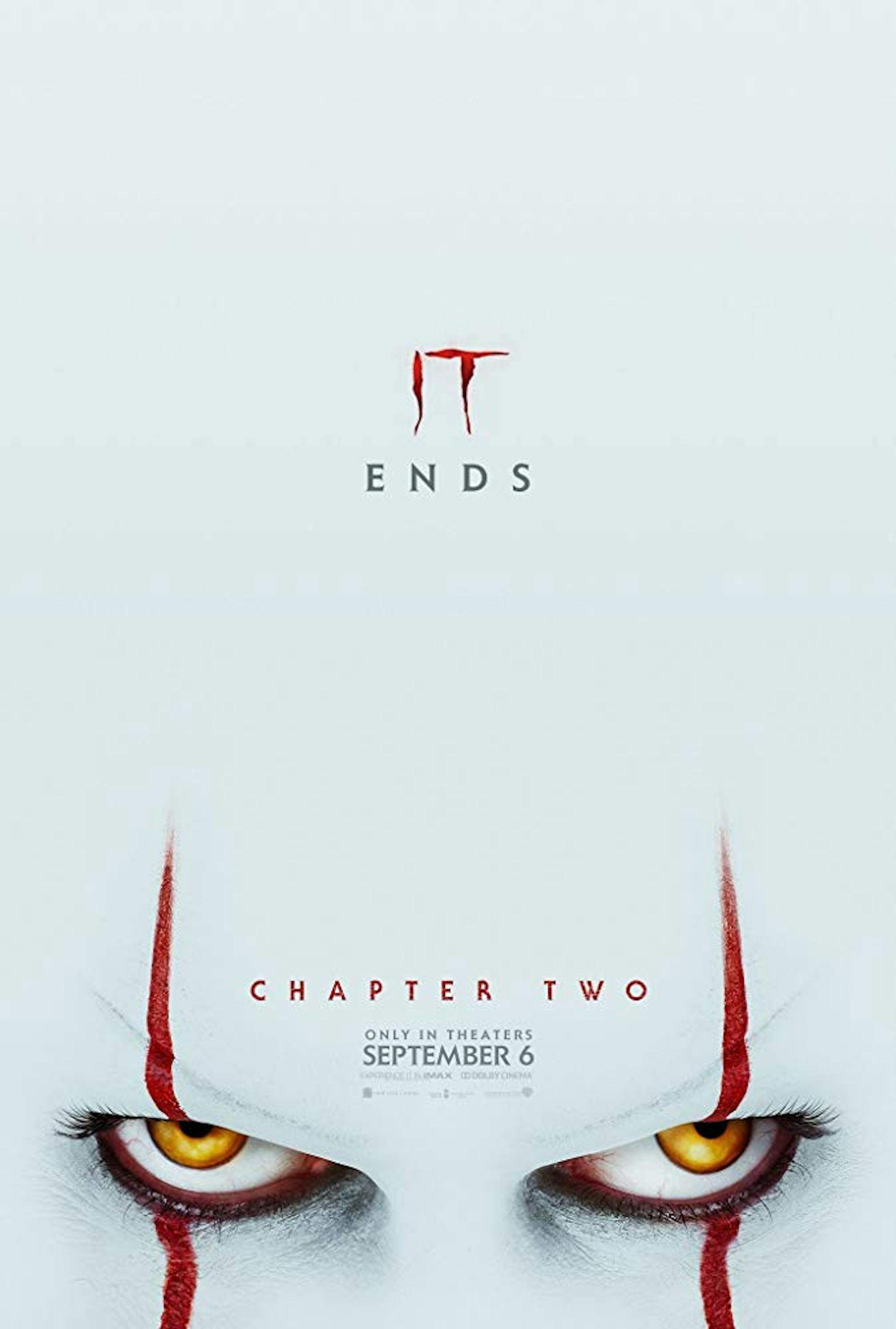“It Chapter Two” (2019) is succeeding in doing what any production company could hope for a sequel to a wildly profitable film to do: Make lots of money, again. This outcome was all but a guarantee, seeing as the first “It” (2017)grossed $700 million worldwide off a relativelysmall budget of $35 million. The series’ producers certainty of success is reflected in the sequel’s nearly doubled production budget.
Unfortunately for us moviegoers, an upgraded budget did not correlate with an upgraded film. Yes, a good amount of that money probably was sunk into getting famed actors Jessica Chastain, James McAvoy and Bill Hader onboard. Yes, the budget increase undoubtedly allowed director Andy Muschietti to tinker around with more CGI and visual effects, which gave the film some charmingly bizarre scenes involving disgusting monsters, all of which felt hyper-surreal but well done. And yes, more money probably allowed the scope of this film, both in location and runtime, to extend outside of quaint, little and fictional Derry, Maine, and outside of the apparently too constrictive two hours and 20 minutes that held the first movie. But much of the fundamental fabric of film was overlooked at the expense of these additions.
In a vacuum, there are no intrinsic trade-offs to increasing a movie budget twofold. As long as the essential elements of a film remain — pacing, plot clarity and camerawork, to name a few — a film should not immediately buckle under the weight of additional spending money. And yet, all of the aforementioned positives that came with the enhanced budget are either wasted or severely convoluted in “It Chapter Two.” What essential elements of any movie were missing from this movie? Why, pacing, plot clarity and camerawork, of course.
From an audience perspective, pacing’s presence in a movie is akin to the bass player’s presence in a rock band: When it goes well, you often don’t notice it, but when it goes poorly, it’s the only thing you notice. “It Chapter Two” is structured into three main parts (not including a traumatic prologue). There is a beginning montage where all of the kids from the first film are observed separately as grown-ups twenty-seven years later before they are reunited by the one member of their group still living in Derry. There is a middle montage where the adults are all back in Derry(save for one) and are separately searching for a single artifact from their respective childhoods. The final part of the film is not quite a montage, as the group is together for most of the time, but even this part — specifically in the final battle against the killer clown Pennywise — – a quasi-montage is utilized. To have the first two-thirds of a film be made up of nearly all montages makes for a jarring experience because it gives the feeling that it is all merely background information, and in “It Chapter Two,” these montages lead almost directly into the climax. The long runtime of two hours and 49 minutes was not an issue, as the montages were rather enjoyable to watch; they just lacked any real transition into the final part and therefore the climax of the movie didn’t overwhelm as much as it should have, given the events that occur in the end.
The other two main faults of the film do not do as much damage as its shoddy pacing, however they are worth being mentioned. First, it is quite unclear throughout the film as to which bizarre CGI monsters are real and which are imaginary. It was definitely a risk on the part of the director to go into such detail on these monsters, and they are examples of body horror done right, but the confusion that came with their varying existences was too palpable to ignore. Secondly, there were a couple of instances where the camerawork was poor. Scenes that come to mind are any that involve dialogue between all of the main characters with ill-timed cuts between each of their faces, an intense amount of jump cuts, some shots which are filmed from off-putting angles and some landscape shots which were almost definitely filmed via drone – not innately bad, just not very cinematic in the traditional sense.
The drone usage highlights the most noteworthy critique of this film: It’s nothing like the first one. A sequel should not be just a repeat of an original, and this movie is set 27 years after the events of the first, but it shouldn’t have to lose all of what made the original spectacular. In “It Chapter Two" anything spectacular — Bill Skarsgård’s performance as Pennywise, a scene involving bleachers at a football game, and the back-and-forth scenes between the past and the present — cannot keep this flimsy paper boat of a film afloat, as the failures of the pace, plot clarity and camerawork were simply too heavy.
'It Chapter Two' gets bogged down in the basics

The poster for 'It Chapter Two' (2019) is pictured.
Summary
"It Chapter Two" is inferior to its predecessor, being pulled down by weak pacing, unclear plot points, and off-putting camerawork.
1.5 Stars





